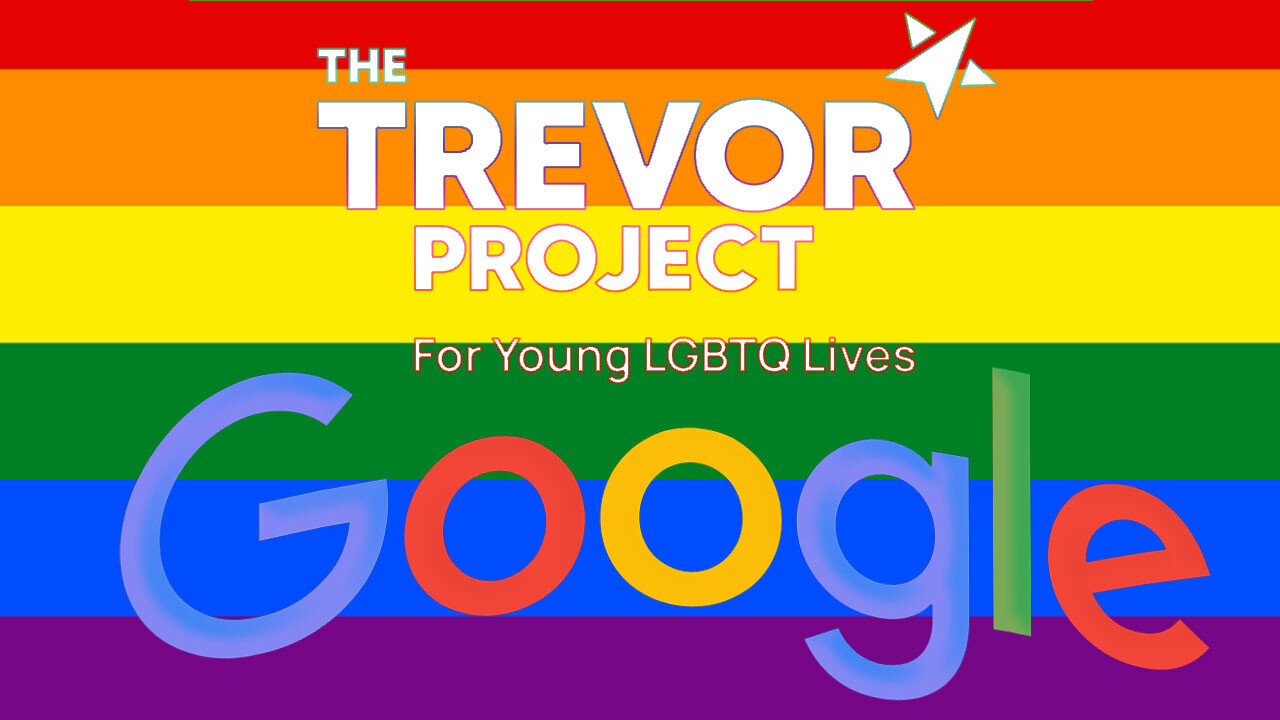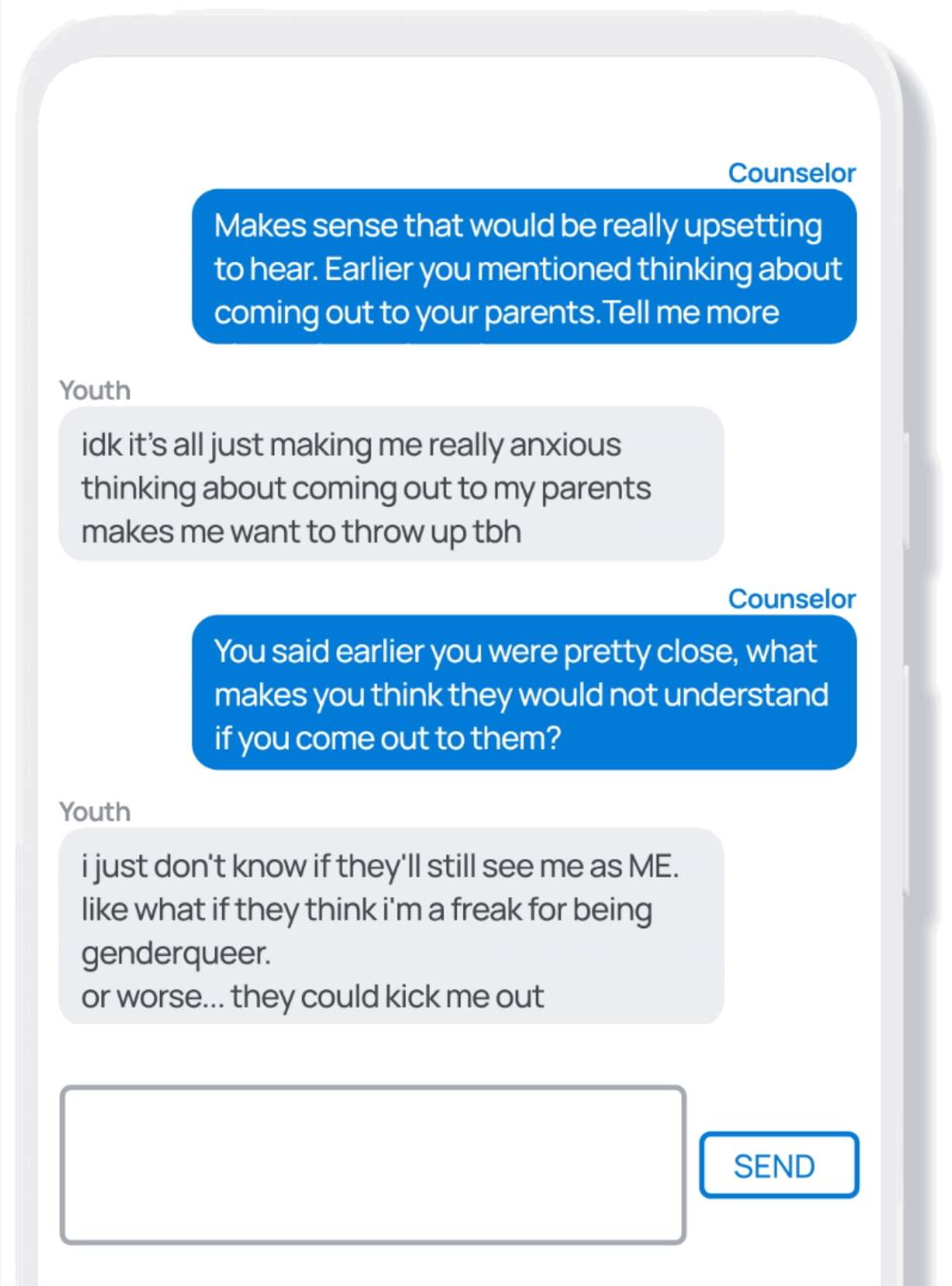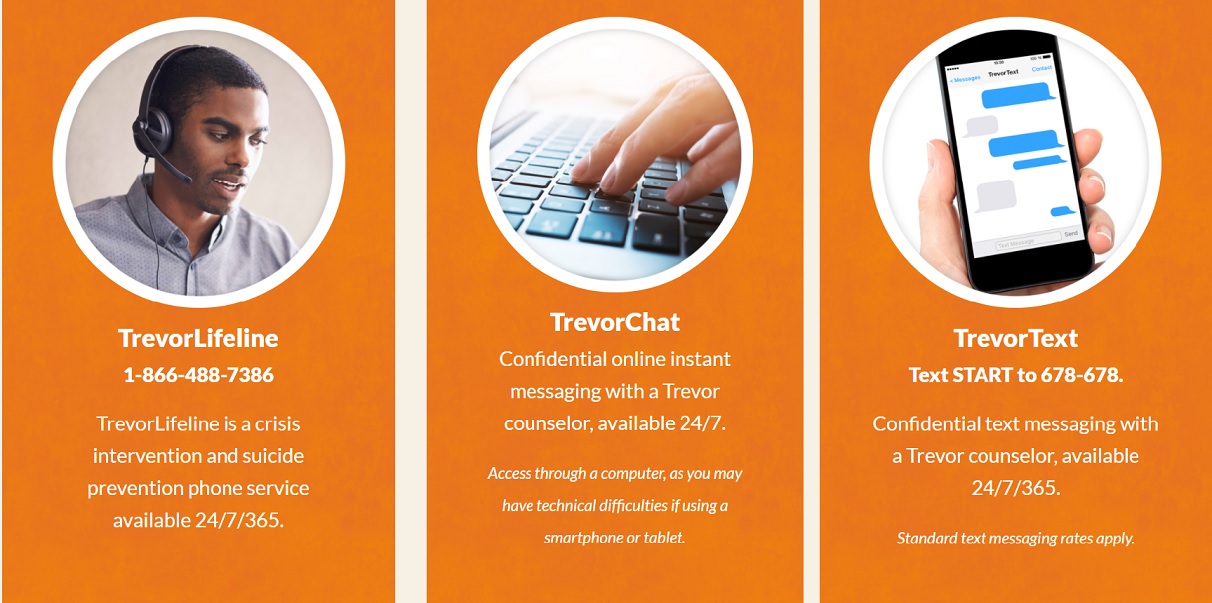
At least one LGBTQ+ youth between the ages of 13 and 24 attempts suicide every 45 seconds. That’s not the kind of problem you’d usually try to solve with artificial intelligence.
Machines aren’t smart enough to take the mental health crisis head-on. Sure, AI-powered therapy bots can be very effective when it comes to augmenting human counseling sessions or reinforcing cognitive behavioral therapy instructions.
But, when it comes to mental health crises, there’s no substitute for a qualified, empathetic human.
That’s exactly why The Trevor Project was established. It’s core products include phone, text, and chat support for queer youth in crisis. Something that, unfortunately, requires a lot of volunteers.
The group knew there was no way AI could directly bolster those numbers – The Trevor Project insists that everyone reaching out for help will always speak with a real, live human whether on the phone, via text, or in chat.
So they flipped the script. Instead of automating the counselors, they created the Crisis Contact Simulator, essentially chat bots that pretend to be LGBTQ+ youth in crisis in order to help train more volunteers.
Per a press release earlier this year:
Nearly 70% of our digital crisis counselors volunteer on nights and weekends, indicating a need for more training options outside of typical business hours. Adding the Crisis Contact Simulator into our counselor training program offers significant flexibility for our trainees, which creates a better experience for our volunteers and enables us to scale our crisis services to reach even more LGBTQ young people in crisis.
Counselors receive a combination of training that includes best practices and core guidelines augmented by roleplaying exercises with both human and AI participants.
The chatbots are designed to represent LGBTQ+ youth in trouble. The first, released earlier this year, was a fictional teen from North Carolina who “feels anxious and depressed” named Riley.
Counselors interact with Riley in order to practice the skills learned during training, and as a way of preparing them for the real thing on live crisis lines.

According to the Trevor Project, it’s been able to add an additional 1,000 volunteers since implementing the Crisis Contact Simulator.
And, to that end, the organization recently announced “Drew,” a new persona meant to introduce counselors to a different challenge.
Per a recent press release:
The new persona, “Drew,” represents a person in their early 20s who lives in California and is facing harassment and bullying. Drew will be used in tandem with “Riley,” the first Crisis Contact Simulator persona that emulates messages from a teen in North Carolina who feels anxious and depressed.
Each persona represents a unique life situation, background, sexual orientation, gender identity, and risk level, in order to prepare trainees to support the full scope of young people whom they might interact with.
It’s refreshing to see an organization dedicated to using AI for good. And it’s super cool to see the same basic technology powering the “How can we help?” bots on just about any commerce website helping The Trevor Project save lives everyday.
If you or someone you know is experiencing a mental health crisis you can contact a helpline by finding the appropriate listing for your location here.
To reach The Trevor Project’s helplines check out the image below:

Get the TNW newsletter
Get the most important tech news in your inbox each week.




